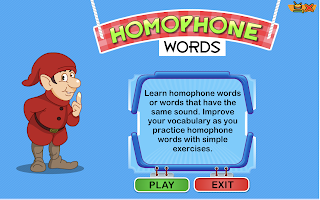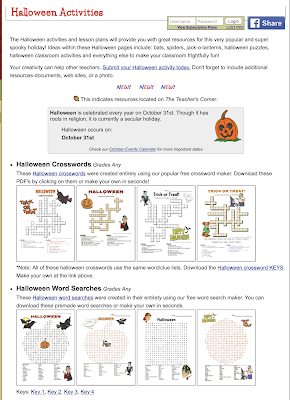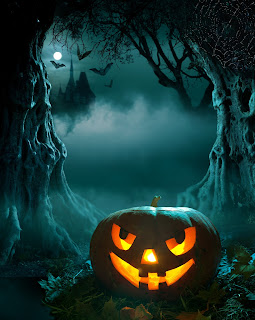OMG! Homophones! If there's one thing that can give kids fits, it's homophones! Oh! And teachers too...homophones can drive any teacher straight up the wall. I don't know how many times I've said, "What? How can they still be using the wrong homophone? I just taught it last week?" Sure, I would teach a number of them in my "homophone lesson", but as Yoda would say, "Remember them, they didn't."
Time for a change. The definition of insanity is doing the same thing over and over again and expectiing a different result. On my quest for a little sanity it was time to change how I taught homophones. The first thing I had to realize was how important it is for kids to learn how to spell homophones. It's not optional.
Why learn homophones?
1. Knowing how to use homophones helps kids learn how to write and analyze different kinds of figurative language, that includes wordplay such as puns and idioms.
2. Many high-frequency words are homophones (knew, new) (to, too, two) (there, their, they're)
3. The idea of reading and writing is to convey meaning. Knowing the correct spelling for the meaning of the word is crucial to understanding and comprehension.
4. Knowing how to spell homophones gives students a sense of accomplishment.
5. Kids are usually enthralled to learn about homophones. They're interesting. Use that interest to help them play with words. The important word being...play!
6. As kids grow into adults, using the wrong homophones is a literary faux pas.
My Experience
Luckily, at the same time I decided to change how I taught homophones, my school started using Sitton Spelling. This program turned teaching spelling on its head. I had always been a poor speller, and I finally understood why after going through the program. Homophones take a special place in the Sitton Spelling program. One set of homophones are addressed at a time, then reviewed every week multiple times in writing, games, and evaluations. For third grade I focused on the "to's" and the "there's". There wasn't a day that passed that one of the homophones wasn't addressed in some way. It's that repetition that was the key. Short, constant repetition and holding the kids responsible for spelling the "to's" and the "there's" correctly. was key. Yes, we did move on to a few other homophones the second half of the year. But they also got the repitition treatment. That much repitition can be a real drag unless there is lots of variety and fun to it. So, to make that repetition more fun, try some of the strategies below. They work!
Number one tip: Teach only ONE homophone word first. Really focus on that spelling, using it in sentences, and demonstrate using it correctly. Once students feel proficient with that spelling, homophones of the words can then be introduced. It's like giving kids some ground to stand on before moving on.
Activities
1. Add a homophone word wall. As you add homophones, add them to the word wall with the definition. Ask students to draw a small picture of the homophone's meaning and add the word and the picture in a homophone section of the reading or writing notebook.
2. Ask kids to write silly sentences using all of the homophones in a homophone set. i.e. "My sister wanted to go too when I went ice skating two days ago." Ask students to get into groups of three and check each other's spelling of each word, then post them on the board or wall.
3. Play the "Shake It" game. Start saying a list of words. (go, dog, shop, this, to,) When you say a word that is a homophone, students must shake a body part. Ask a different student each time to name the body part that should be shaken for the next list.
4. As students learn a number of homopones, play Homophone Old Maid. Divide students into groups of four students each. Use 20 homophone pairs you have studied to make playing cards. Cut out rectangles in the size of playing cards and write a homophone on each card. Then make four old main cards to add to the deck. Have students take turns choosing a card from the student next to them. When they get a match (or a word and an old maid card) they call out "homophone" and show both cards. To actually win the match for the two cards the student must make a sentence using each homophone correctly. When all cards are used (there may be some left over due to old maid cards) the student with the most matches wins.
5. Ask students to use the homophones you have covered and make a fill-in-the blank for another student to answer. They provide the homophone choice at the end of the sentence. They must also provide a grading key. For example: 1. I went ____ the store. (to, too or two)
6. Create homophone riddles. "What do you call a pony with a sore throat? A hoarse horse."
7. Have a contest to see which student can put the most homophones in one sentence and still have it make sense.
8. Make a crossword puzzle that gives clues for the homophone used and students must fill in the correct homophone. There are many crossword puzzle makers for teachers such as: Puzzle maker There are lots out there.
9. Play Homophone Memory. Write all of the homophones you wish to review on index cards. Students turn the set upside down and take turns turning two up at once. They may keep any set they match. The student with the most matches wins.
10. Play a homophone relay race. Divide the class into two groups. Have one person from each group come to the board. Say the homophone being used, then read it in a sentence. The first student to write it on the board wins the round. The team with the most points wins.
11. Play Homophone Pictionary. Again, divide the group into two teams. Choose a word that is a homophone. Show it only to the students at the board. The first to draw a picture the gets the correct response from their team wins the point.
12. Hand out the same copied article, newspaper advertisement, etc. Ask students to find any and all words that are part of a homophone set. The other homophone does not have to be in the article.
Now for some fun online games! Free of course all from Turtle Diary
I hope these ideas come in handy while you teach homophones...all year long of course!
If you have other games or ideas please add them below!
2. Ask kids to write silly sentences using all of the homophones in a homophone set. i.e. "My sister wanted to go too when I went ice skating two days ago." Ask students to get into groups of three and check each other's spelling of each word, then post them on the board or wall.
3. Play the "Shake It" game. Start saying a list of words. (go, dog, shop, this, to,) When you say a word that is a homophone, students must shake a body part. Ask a different student each time to name the body part that should be shaken for the next list.
4. As students learn a number of homopones, play Homophone Old Maid. Divide students into groups of four students each. Use 20 homophone pairs you have studied to make playing cards. Cut out rectangles in the size of playing cards and write a homophone on each card. Then make four old main cards to add to the deck. Have students take turns choosing a card from the student next to them. When they get a match (or a word and an old maid card) they call out "homophone" and show both cards. To actually win the match for the two cards the student must make a sentence using each homophone correctly. When all cards are used (there may be some left over due to old maid cards) the student with the most matches wins.
5. Ask students to use the homophones you have covered and make a fill-in-the blank for another student to answer. They provide the homophone choice at the end of the sentence. They must also provide a grading key. For example: 1. I went ____ the store. (to, too or two)
6. Create homophone riddles. "What do you call a pony with a sore throat? A hoarse horse."
7. Have a contest to see which student can put the most homophones in one sentence and still have it make sense.
8. Make a crossword puzzle that gives clues for the homophone used and students must fill in the correct homophone. There are many crossword puzzle makers for teachers such as: Puzzle maker There are lots out there.
9. Play Homophone Memory. Write all of the homophones you wish to review on index cards. Students turn the set upside down and take turns turning two up at once. They may keep any set they match. The student with the most matches wins.
10. Play a homophone relay race. Divide the class into two groups. Have one person from each group come to the board. Say the homophone being used, then read it in a sentence. The first student to write it on the board wins the round. The team with the most points wins.
11. Play Homophone Pictionary. Again, divide the group into two teams. Choose a word that is a homophone. Show it only to the students at the board. The first to draw a picture the gets the correct response from their team wins the point.
12. Hand out the same copied article, newspaper advertisement, etc. Ask students to find any and all words that are part of a homophone set. The other homophone does not have to be in the article.
Now for some fun online games! Free of course all from Turtle Diary
This is a fun one for fourth graders and up. A homophone is given and students shoot the matching homophone.
This one is a simple activity that asks student to identify if two words are homophones or not.
In this game the student must eat the homophone before the lizard does!
I hope these ideas come in handy while you teach homophones...all year long of course!
If you have other games or ideas please add them below!
Need some homophone resources? Check out the following resources by clicking on the cover:
Homophone posters, Work sheets and even a game
Follow me on Pinterest for TONS of great ideas and freebies for your classroom:























































